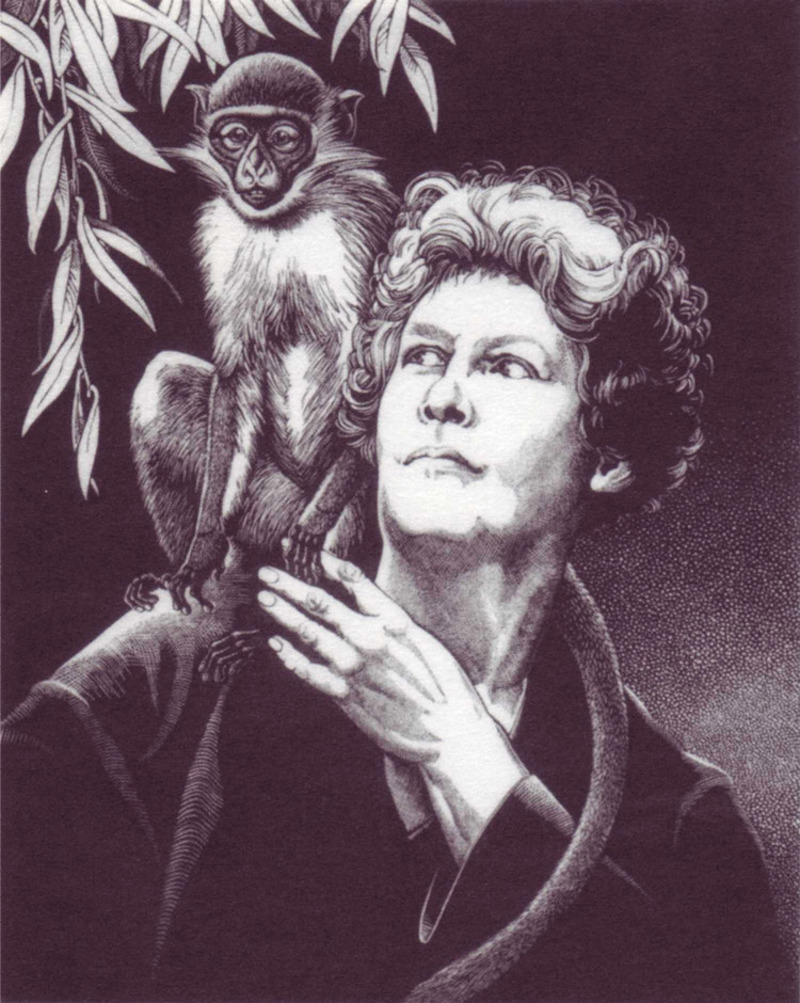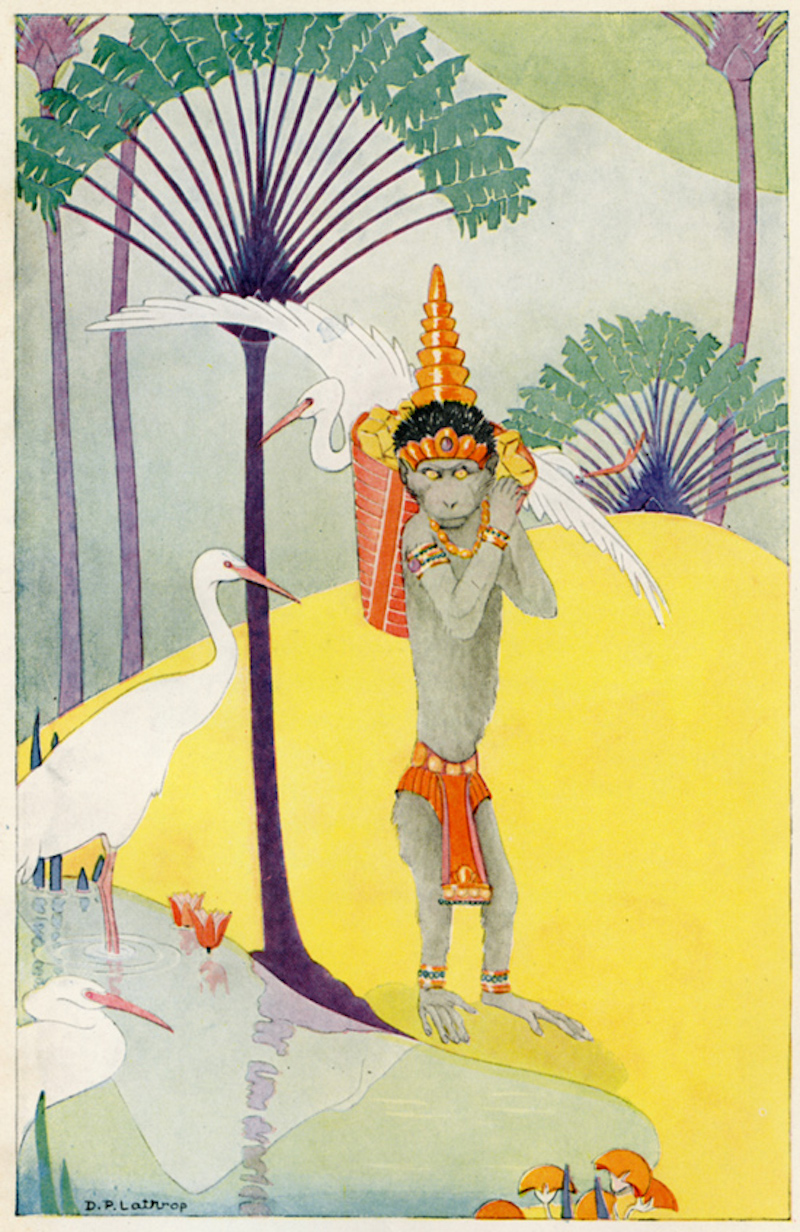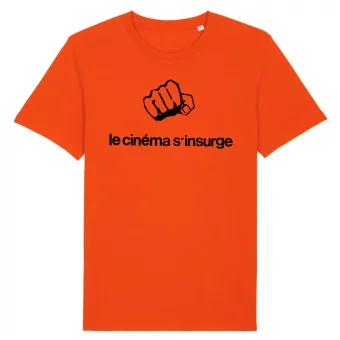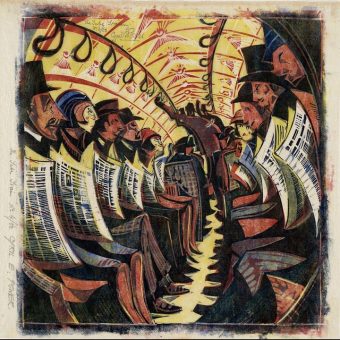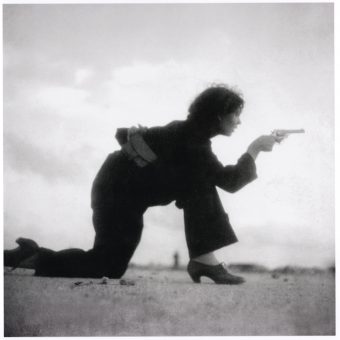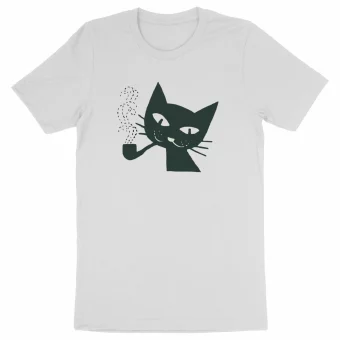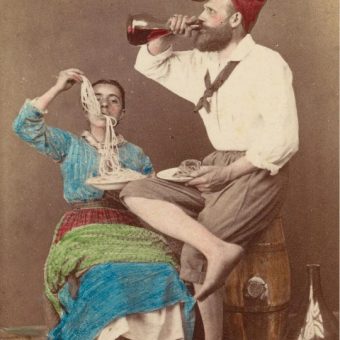“Long long is Time, though books be brief:
Adventures strange ay, past belief…”– Walter de la Mare, The Three Mulla-Mulgars illustrated by Dorothy Pulis Lathrop
Soon after Dorothy Pulis Lathrop (April 16, 1891–December 30, 1980) was hired to illustrate a book of experimental poems by a young American poet, the publisher went bankrupt. Her luck changed when the English writer Walter de la Mare (25 April 1873 – 22 June 1956) saw her work and asked her to illustrate a fairytale he had written. Her first published series of illustrations appeared in de la Mare’s book for children, The Three Mulla-Mulgars (1919).
The fantastical story is of three monkeys whose dying mother’s last words are for them to find their father, Seelem, a Mulla-mulgar (royal monkey) who was taken away by a spiritual calling. Their adventure takes them through a series of strange landscapes. They encounter Minimuls (subterranean monkeys), Oomgars (humans), Babbaboomas (baboons), Moona-mulgars (mountain monkeys), and supernatural beings like the ancient Mishka, the black panther agent of death Immanala, and the Water-midden.
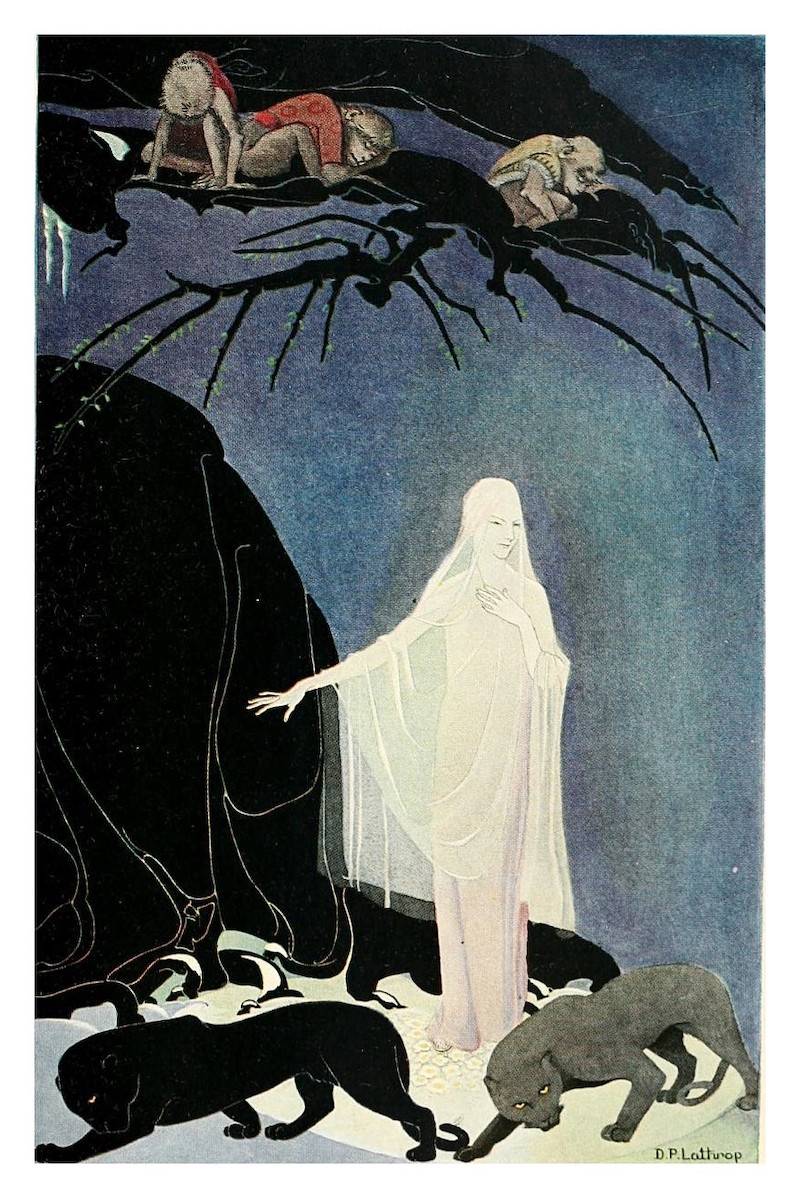
‘THE QUEEN OF THE MOUNTAINS IS IN THE FOREST’ . . . WITH FINGERS OF FROST’
“And they combed themselves, and stood up to their trouble, and thought stubbornly, as far as their monkey-wits would let them, only of the future (which is easier to manage than the past).”
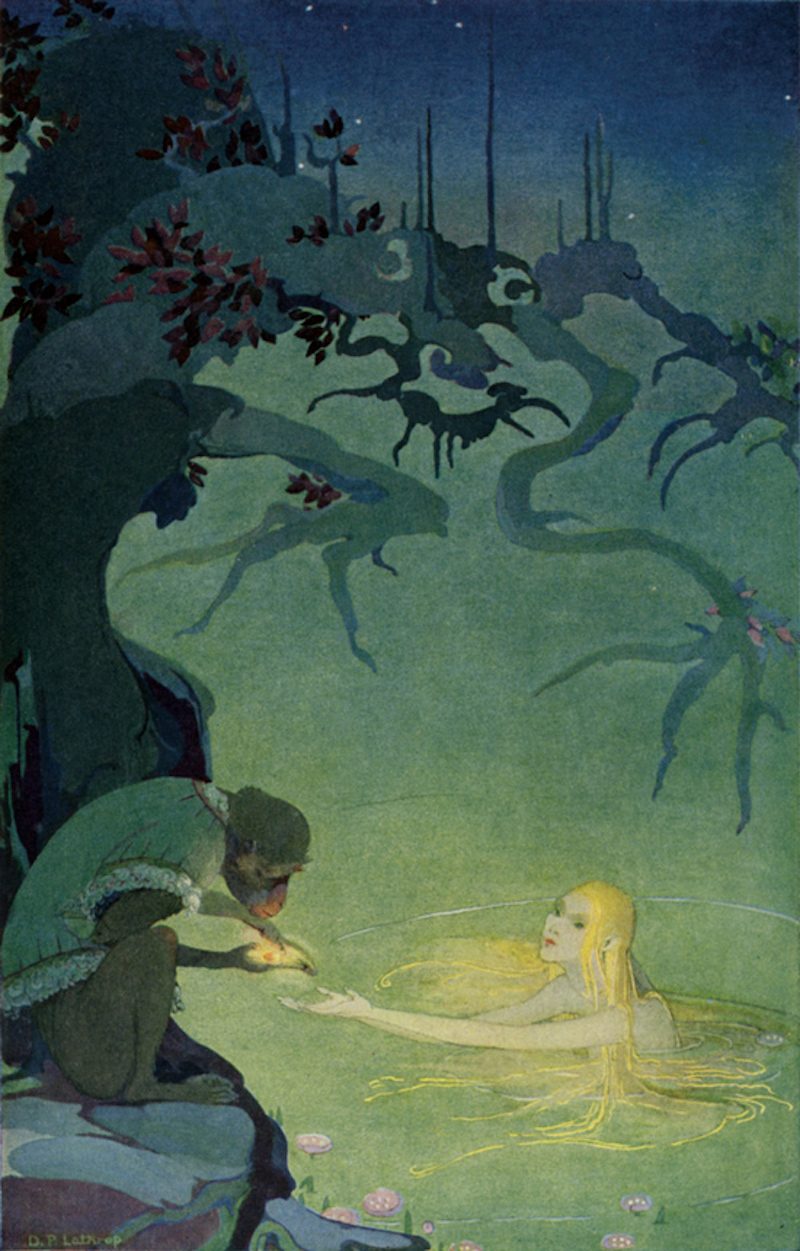
‘OH, BUT IF I MIGHT BUT HOLD IT IN MY HAND ONE MOMENT, I THINK THAT I SHOULD NEVER EVEN SIGH AGAIN!’
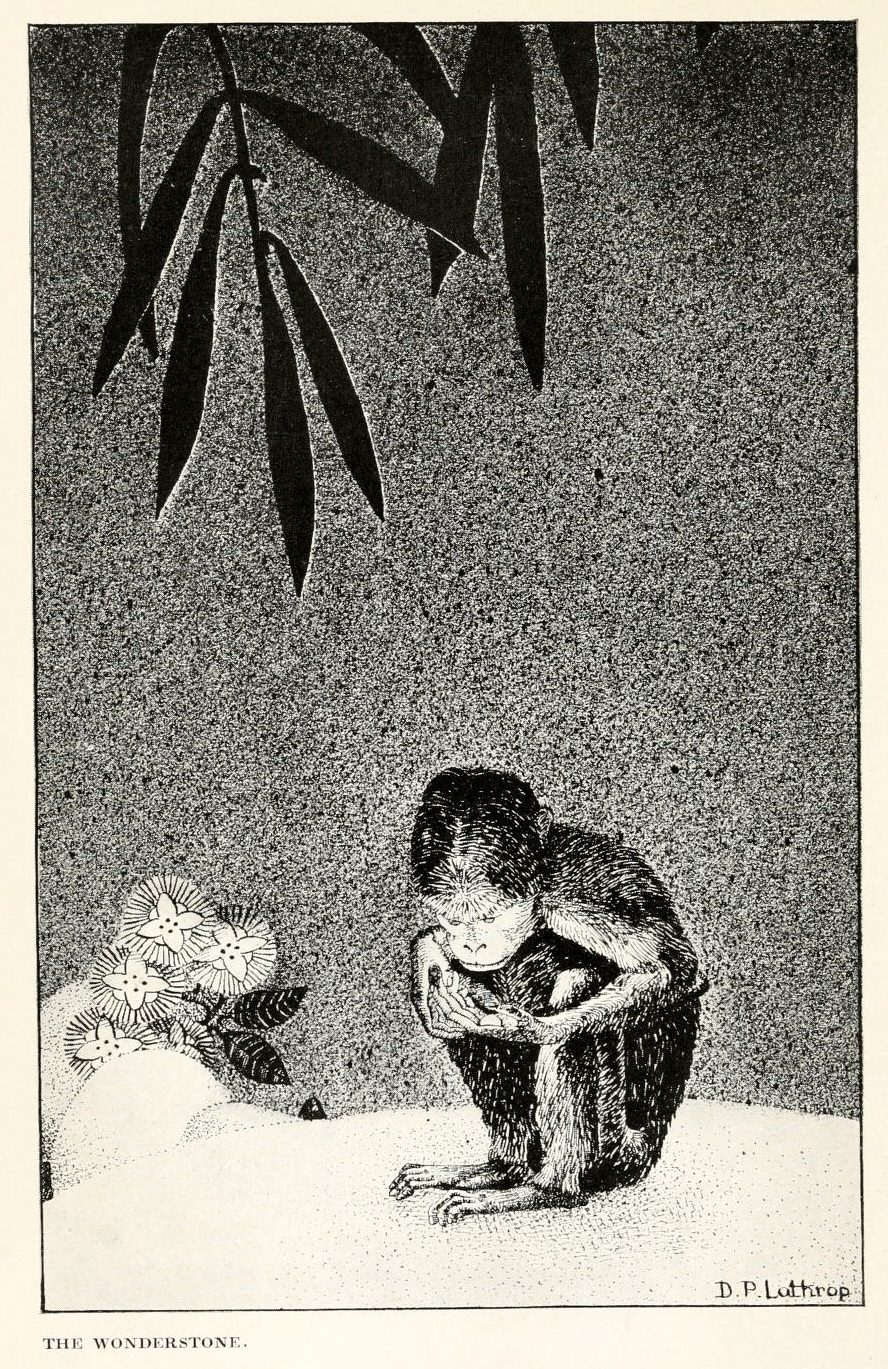
The youngest monkey, Nod, is tasked with caring for the magical Wonderstone, “the strange pale glowing milk-white Wonderstone, carved all over with labyrinthine beast and bird and unintelligible characters… as if in itself it were all Munza-mulgar, its swamps and forests and mountains lying tinied… and as full of changing light as the bellies of dead fishes in the dark.”
“That one
Alone
Who’s dared, and gone
To seek the Magic Wonderstone,
No fear, Or care,
Or black despair,
Shall heed until his journey’s done.
“Who knows Where blows
The Mulgars’ rose,
In valleys ‘neath unmelting snows All secrets
He
Shall pierce and see,
And walk unharmed where’er he goes.”
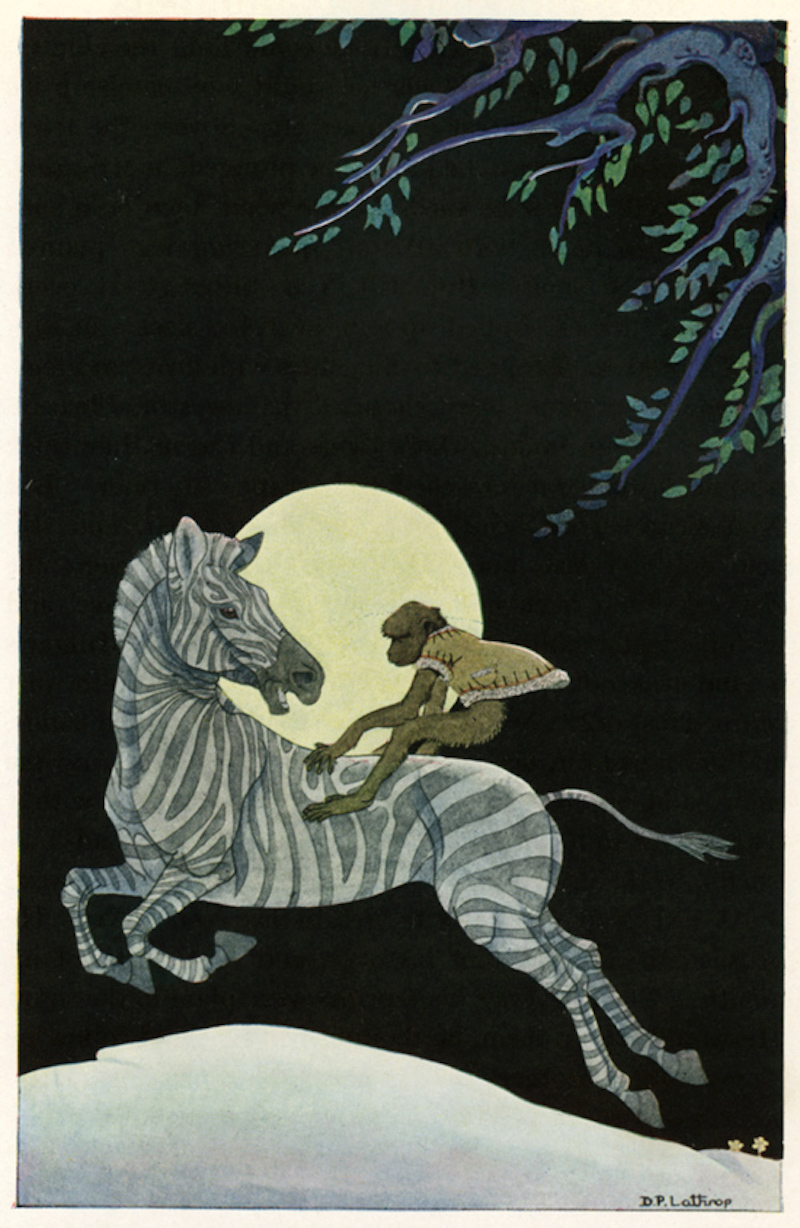
“HE JUMPED, HE REARED, HE KICKED, HE PLUNGED, HE WRIGGLED, HE WHINNIED.”
“Over the swamp stood a shaving of moon, clear as a bow of silver. And all about, on every twig, on every thorn, and leaf, and pebble; all along the nine-foot grasses, on every cushion and touch of bark, even on the walls of their hut, lay this spangling fiery meal of Tishnar–frost. He called his brothers. Their breath stood round them like smoke. They stared and snuffed, they coughed in the cold air. Never, since birds wore feathers–never had hoar-frost glittered on Munza-mulgar before.”

‘HE FELT A SUDDEN DARKNESS ABOVE HIS HEAD, AND A COLD TERROR CREPT OVER HIS SKIN.’
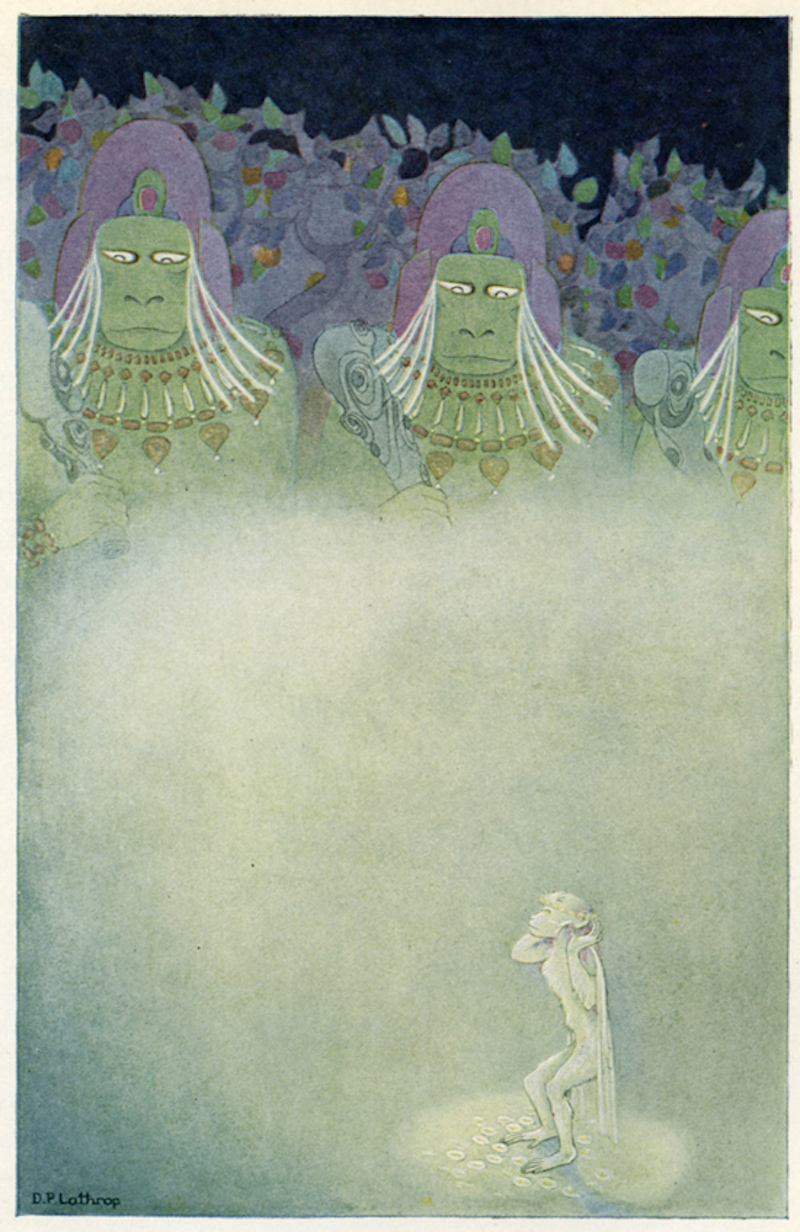
‘FOR THERE … STOOD AS IF FROZEN IN THE MOONLIGHT THE MONSTROUS SILVER-HAIRED MEERMUTS OF MULGARMEEREZ, GUARDING THE ENC’
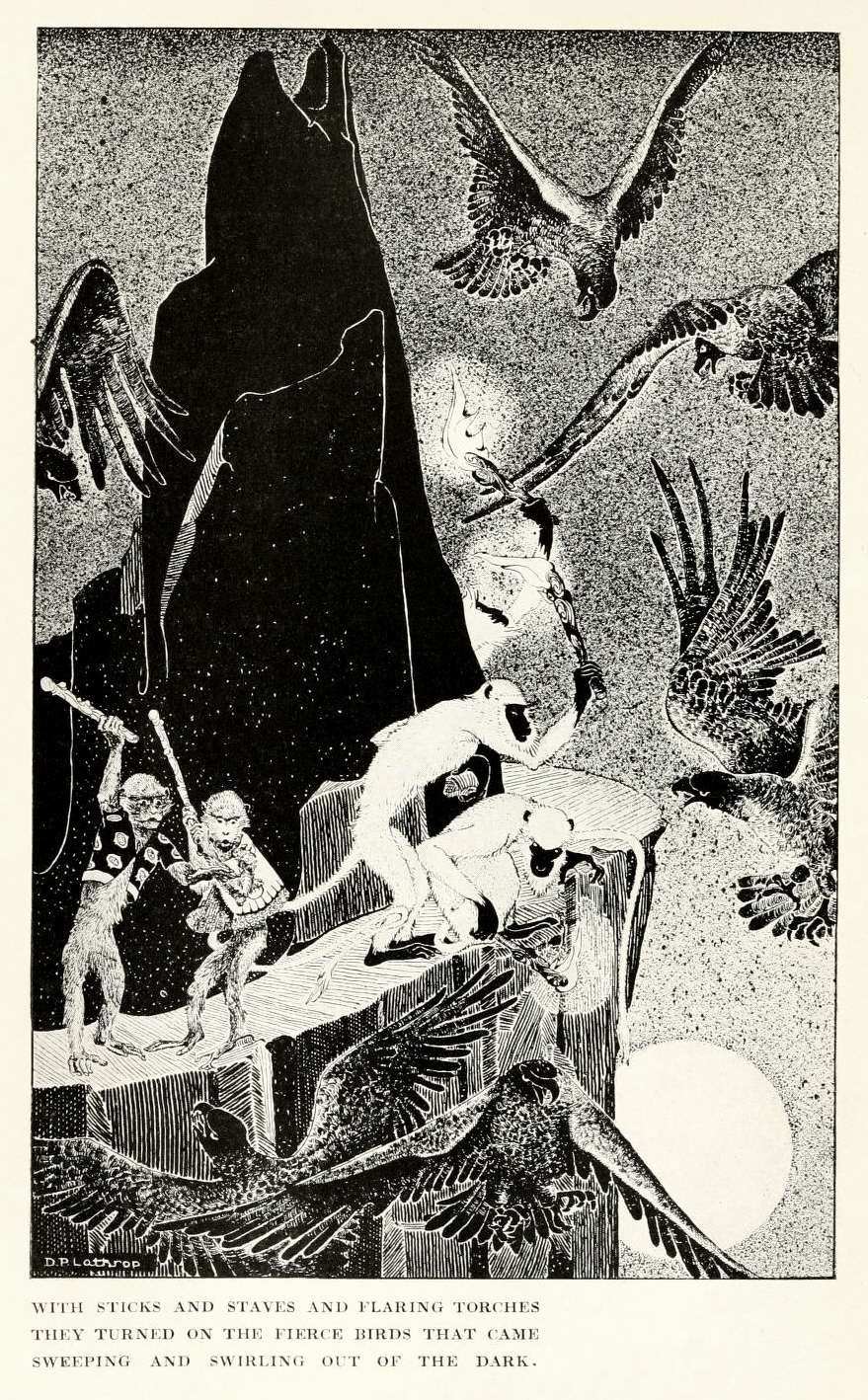
WITH STICKS AND STAVF.S ANJ) FLARINCi TOR( HI.S THEY TURNED ON THE FIERCE BIRDS THAT CAME SWEEPING AND SWIRLING OUT OF THE DARK.
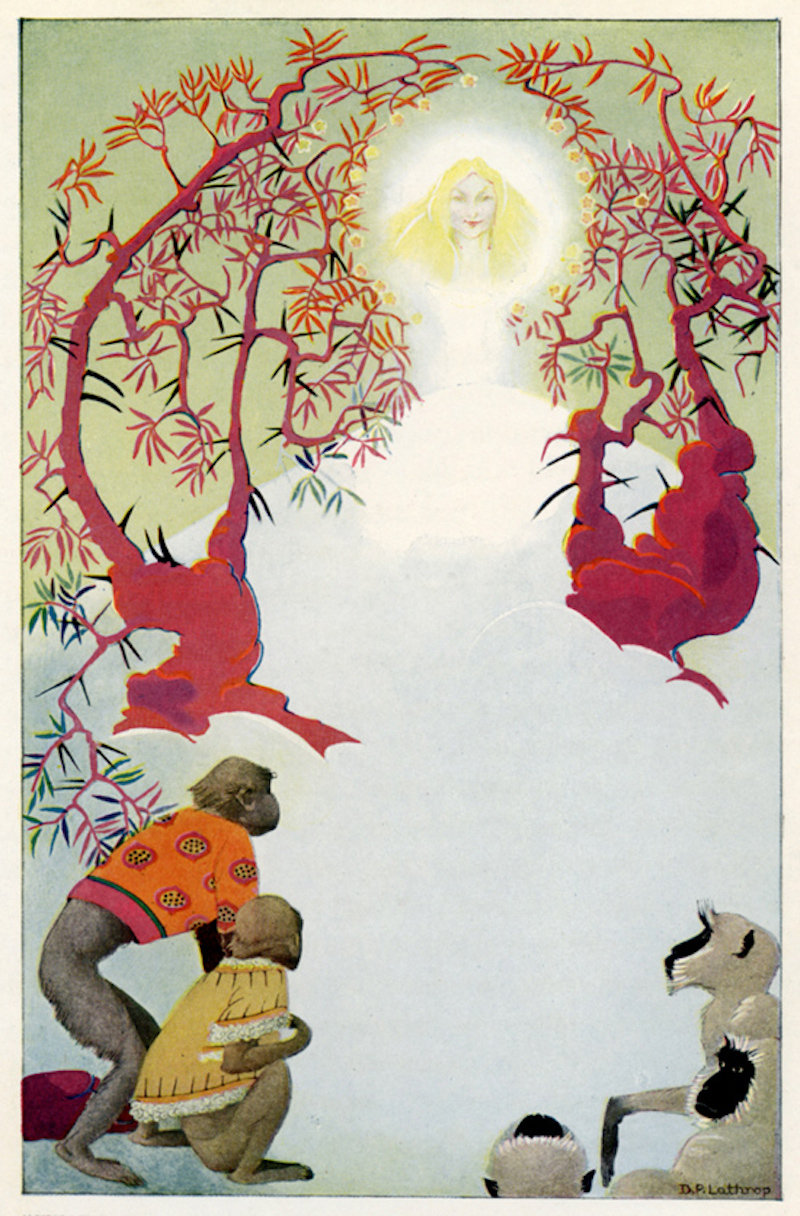
‘WHAT IS IT, BROTHER? WHY DO YOU CROUCH AND STARE?’
“He was shrunk very meagre with travel, and his little breathing bosom was nothing but a slender cage of bones above his heart.”
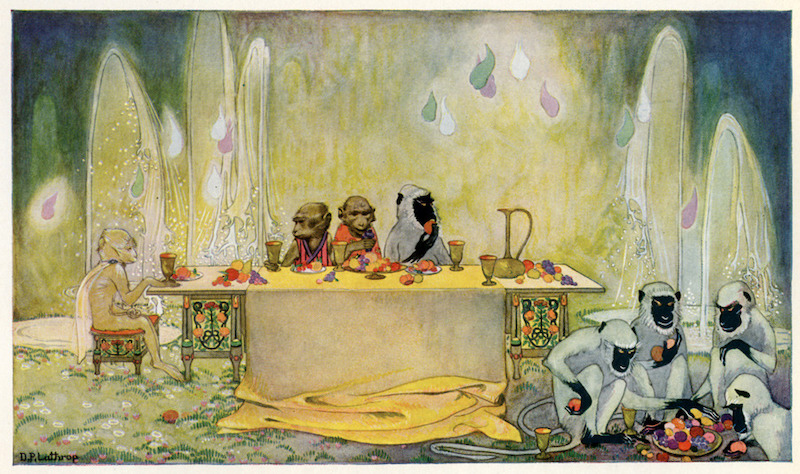
‘THEY FEASTED ON FRUITS THEY NEVER BEFORE HAD TASTED NOR KNEW TO GROW ON EARTH’
Dorothy Pulis Lathrop
Following the success of The Three Mulla-Mulgars, Lathrop developed a friendship with de la Mare, and illustrated five more of his books for children: Down-Adown-Derry (1922), Crossings (1923), The Dutch Cheese (1931), Mr. Bumps and His Monkey (1942) and Bells and Grass (1942). Lathrop loved animals, and for the character Jasper in Mr. Bumps and His Monkey, she worked with animal model (see lead image above).
Amongst her many other commissions, the most enduring and best-known of her illustrations are those for Rachel Field’s Hitty, Her First Hundred Years (1929). Field and Lathrop purchased an antique doll, and developed Hitty’s adventures in the hands of various owners. The book won the Newbery Medal for “the most distinguished contributions to American literature for children”
Lathrop’s The Fairy Circus (1931), which features fairies who join woodland creatures in acrobatic performances, was named a Newbery Honor Book..
In 1935, changes in commercial printing prompted Lathrop to switch from pen and ink to lithographic pencil as a primary medium. In addition, she began to shift her focus from imaginary worlds to animal subjects. Who Goes There? (1935), Lathrop’s first book reproducing drawings in lithographic pencil on illustration board, depicts interactions of various animals in their habitats. In 1938, Lathrop earned the first Caldecott Medal for her images in Animals from the Bible (1937).
Lathrop and her sister Gertrude, a sculptor, cared for a menagerie of domestic and wild creatures in their home and studio, both for companionship and as models for their art. For the remainder of her career, Lathrop wrote many books based on these and other animals. (right: Dorothy Lathrop (1891-1983), Goldfish, 1944, engraving, woodcut in ink on Japanese paper, 9 3/4 x 10 3/4 inches. Albany Institute of History & Art. Gift of the Albany Print Club)
Lathrop’s drawings in this exhibition are fresh, dynamic, enchanting and sophisticated. Her images are classic and appeal to people of all ages.
Lathrop illustrated nearly 40 books for children, and wrote and illustrated nine topical nonfiction books. In 1938, her illustrations for Animals of the Bible won the inaugural Caldecott Medal, the award named after English illustrator Randolph Caldecott given to the artist of the most distinguished American picture book for children.
You can read The Three Mulla-Mulgars here, at The Internet Archive.
Via: Brandy Wine Museum, Lathrop Genealogy, 50 Watts
Would you like to support Flashbak?
Please consider making a donation to our site. We don't want to rely on ads to bring you the best of visual culture. You can also support us by signing up to our Mailing List. And you can also follow us on Facebook, Instagram and Twitter. For great art and culture delivered to your door, visit our shop.
